Are you looking for what English Teacher Outfits look like and what you could wear?
This article has all the answers!
What are English Teacher Outfits, and how to build them to look modern?
If you ask this question to school teachers, you will get as many different answers as there will be respondents.
The truth is that the answer depends on many factors. And what works for one teacher may not work for another.
Basically, the younger you are and the older your students are, the more important it is how you look – especially at the beginning of the year.
The difficult question many of us have is what exactly will look professional enough but still modern?
Let’s face it, dressing up professionally and appropriately for a young teacher can be challenging.
When you come to school, it is essential to look your best, but it shouldn’t deprive you of the opportunity to be yourself.


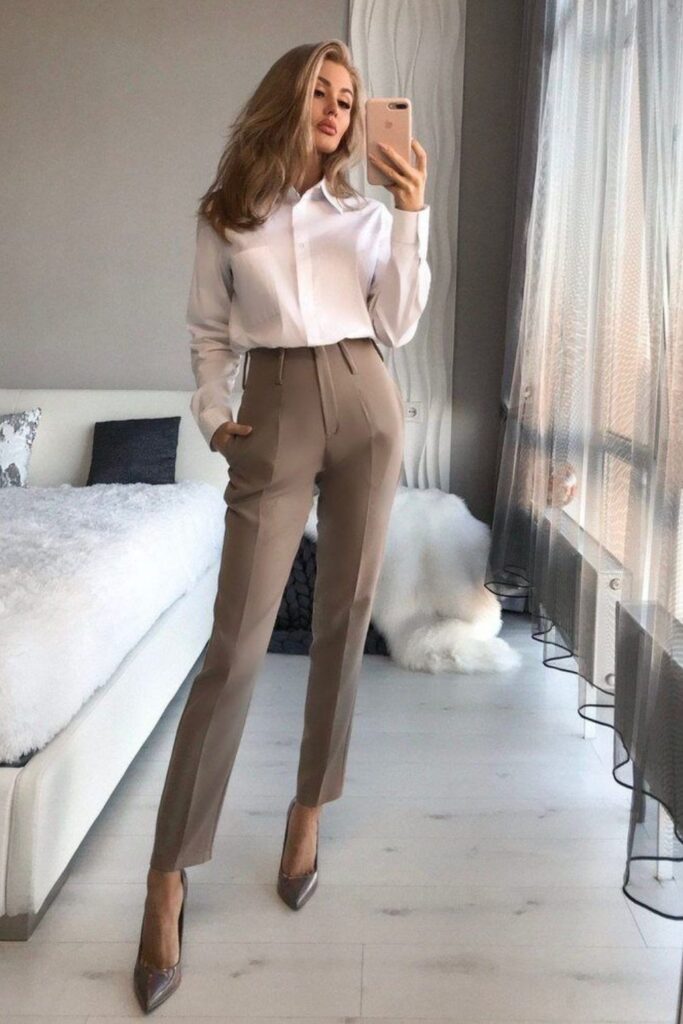
First, the dress code of most organizations (and not only schools) is very flexible, especially during this worldwide situation (most of us are working via Zoom).
If we are not talking about a specialized institution or a specific form of clothing that is not prescribed in terms of the contract, no one will force you to constantly walk in a particular dress, or suit, or wear a tie.
Secondly, having learned about the precise rules regarding clothing in an organization, you have the right not to work there if they do not suit you, but, as the saying goes, “they don’t go to someone else’s monastery with their charter.”
So, while many schools have a dress code for their students, they usually don’t have a clear policy for teachers or educators regarding dress.
Therefore, you can dress the way you are used to as long as it is appropriate for classwork and still showcases your personality.
Everyone knows what it means to “dress appropriately” or “dress professionally.” Right?
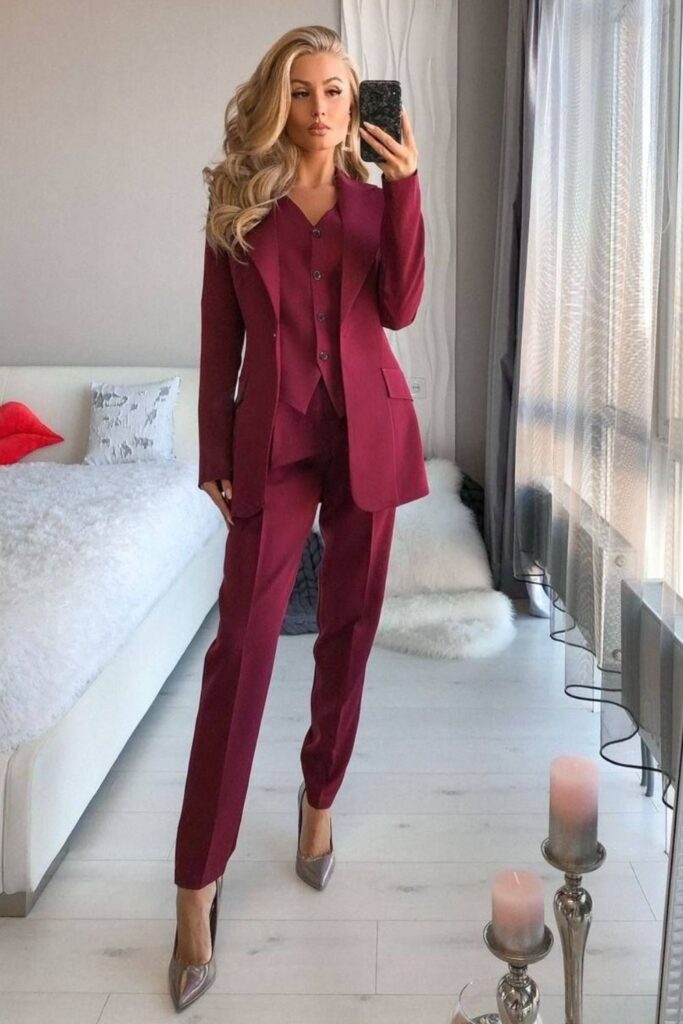

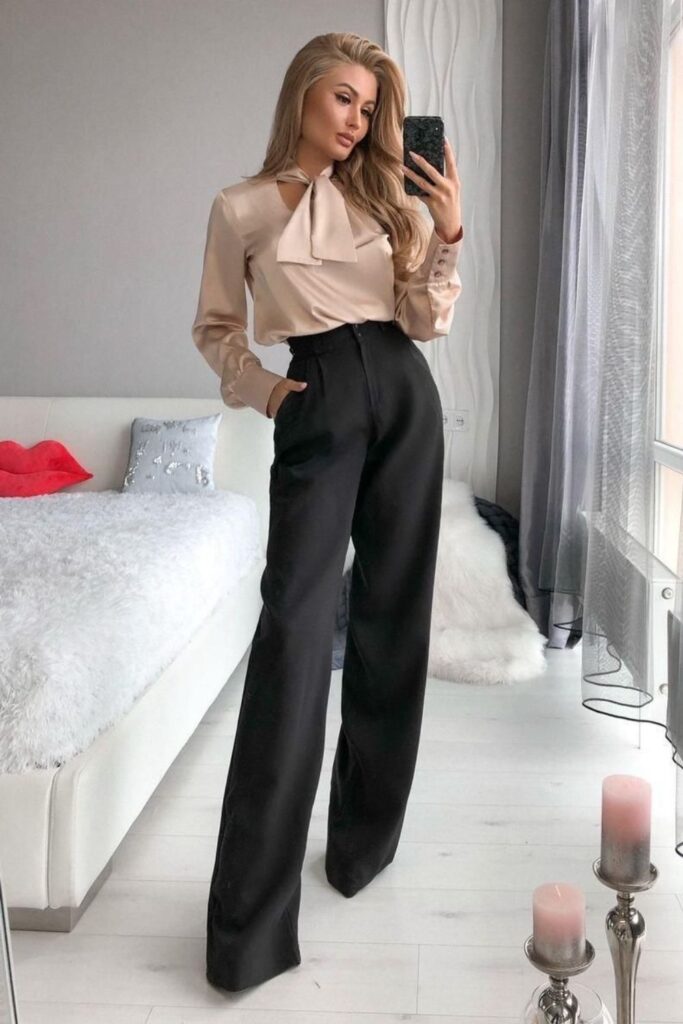
School personnel policies generally prohibit sheer, “torn,” short or very tight-fitting clothing, shorts, straw hats, slippers, inappropriate sandals, beachwear, and clothing with questionable slogans.
There is no rule that a teacher cannot dress fashionably or stylishly (yes, even if your concept of style is very peculiar).
In fact, by adhering to a specific approach to dressing and drawing on their notions of professionalism.
A well-dressed teacher will project a more robust atmosphere of authority and leadership.
Any teacher knows that unspoken authority is the best kind.
Your clothes do not pose any threats or offer any incentives but still evoke a more respectful attitude from students if they are correctly selected (the principle of getting impressed by your clothes, at first sight, has not been cancelled yet).


Tips for the right English teacher outfits
- Find out if your school has a dress code. Some schools have a standardized dress code for teachers that describes what you can and cannot wear. Speak with the principal or school administrator for a copy of the document prescribing and describing the formal dress code for teachers. Remember that most school administrators have several suggestions even if it is not there.
- Women in schools are expected to wear skirts, pants with blouses or sweaters, dresses or suits.
- Choose clothes and shoes that are easy to wash, clean and wear the next day. This is especially true for those who work with small children. You probably won’t enjoy walking around in glue or paint residues all day.
- Avoid low-cut clothing
- Give preference to comfortable shoes. As a teacher, you will be on your feet almost constantly, sometimes for hours at a time. Comfortable shoes, low-heeled shoes, and sports shoes will be suitable solutions. Be careful with sandals; open shoes are not always comfortable. Look for shoes that are cushioned and breathable. You can also add accessory panels to your boots to make them more comfortable. Avoid wearing high heels in class, as your feet may start to ache after a few hours or at the end of the day.
The best option for clothing is a combination of a shirt with trousers, a skirt and a jacket.
This is a good approach, especially if you rush in the morning and need to start early. You can easily change shirts or T-shirts and still look professional enough.

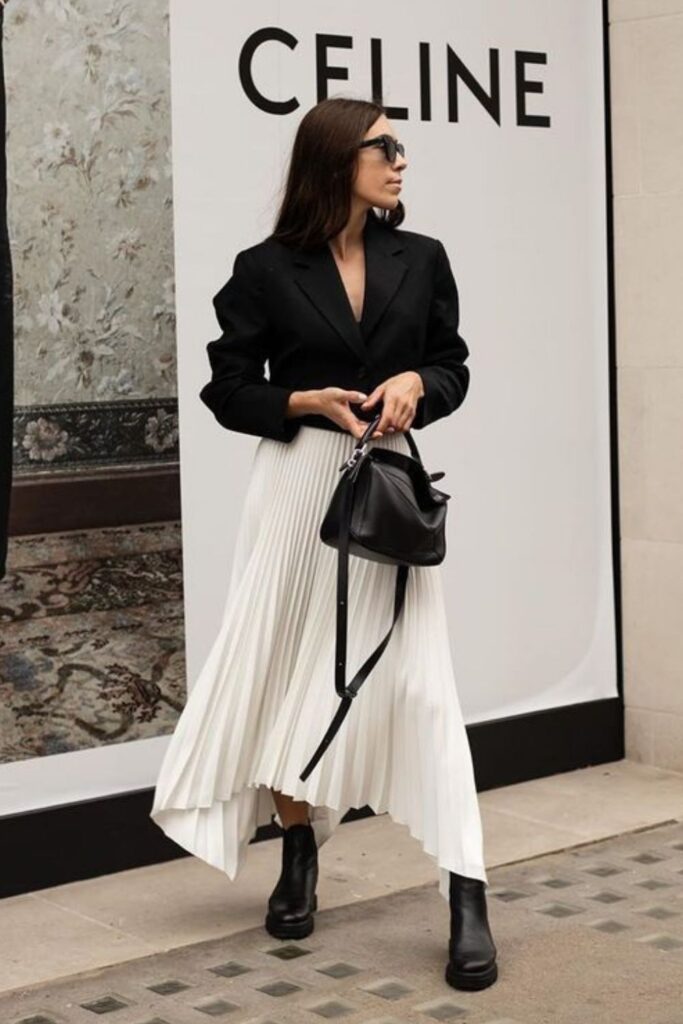

- Choose jeans and a shirt if allowed. Avoid jeans with a low rise and those that show off your legs or belly, as these trousers are unacceptable.
- The color of the clothes should not be flashy or too “imprinted” to spare your students; they look at you all the time (I hope because they want to listen to you, and not as something unusual) throughout the lesson.
- If you are hosting a school night or performing at a school event, you must put in the extra effort. But it is pointless to give advice here. The evening can be themed; use your common sense in this case.
- Hairstyle. Choose a haircut or styling that’s simple enough for daily grooming. Make sure your hair looks clean.
- Keep your makeup minimal and straightforward. Avoid too bright makeup around the eyes as this can distract students. A simple, clean look is the best.
- Be conservative. If you have tattoos, you need to cover them with long sleeves and pants as you work; the same goes for visible piercings. Remember that you must be a sufficiently authoritative and “a role model” person for your students, and by dressing neatly and conservatively, you contribute to this.


Be Yourself And Still Be A Cool Teacher
Your clothes should be comfortable. Not only because you have to move, bend, squat, write on the board and lean towards the student in it.
It should be comfortable for you. If you don’t feel comfortable in a formal dress or suit, choose something that makes you feel yourself.



Ultimately, each school has its policy; if in doubt, find out before you start working.
And the students will accept you in a T-shirt and jeans, just like the administration, if you prove yourself as a professional and do not become “fake.”



Agree that one of the main tasks of any teacher is the ability to present oneself and be an example for schoolchildren.
Tasteful clothing also plays an essential role in achieving these goals.
Outfits that do not correspond to the profession are reasons for disagreements with colleagues and poor interaction with children and their parents.

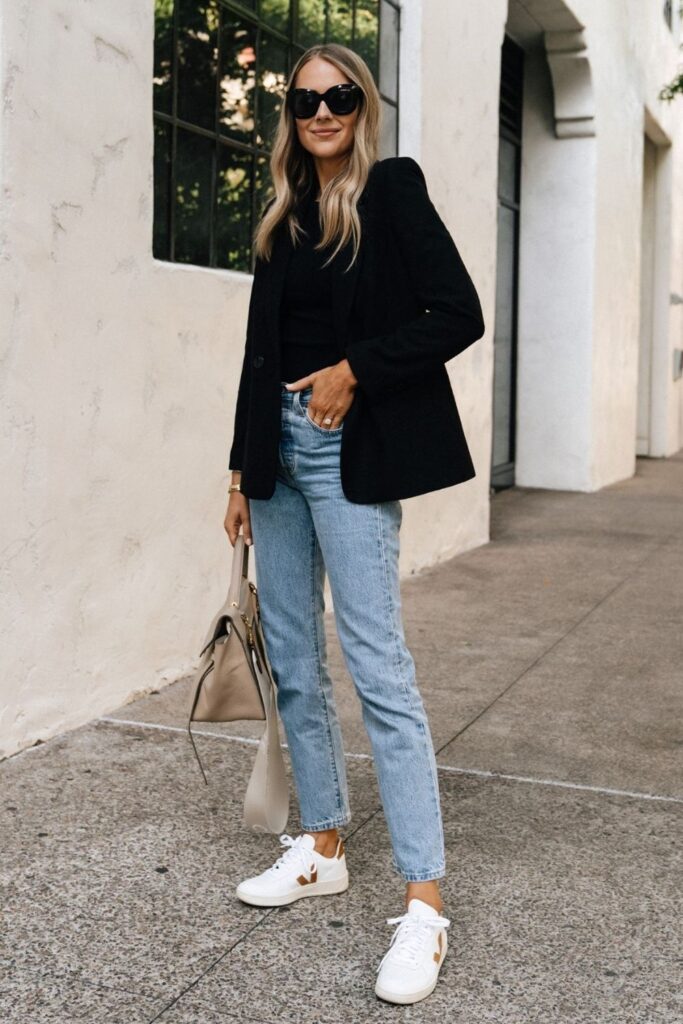

What Clothes Should You Exclude From Your Wardrobe?
To begin with, I would like to focus on clothes, which in no case should be in the teacher’s wardrobe.
The teacher needs to give up tight clothes made of stretchy synthetics, revealing tops, tight skirts and trousers that resemble nothing more than leggings.
Of course, clothes should not be too loose; all elements should fit the body, but no more than something acceptable.
Clothes with a defiant decor. The teacher should avoid all those blouses and shirts covered with various beads, rhinestones, lurex or sequins.
All this should be left for the evening, but not for work. Short dresses and skirts as well.
Remember, the average length of dresses and skirts should be knee-length or lower – this is considered the best option.
Also, the teacher shouldn’t wear skirts and dresses with a slit (except a slit in the back of a classic skirt).
Clothes with exposed areas of the body or plunging neckline. You will also have to give up transparent fabrics with mesh inserts and clothes with transparent lace.
Street shoes. Remember, ankle boots and your rain “Hunters” shoes should be worn exclusively outdoors.
Remember that your main task is to be an example to follow!
In general, teachers have a preference for classical, business, English and French styles.
However, we should not forget that we must dress differently at each age, which we will focus on further.
We understand perfectly well that girls who choose a career as a teacher want to dress stylishly and correspond to the latest fashion trends.
However, remember that your clothes should not look like teens’ clothes, especially if you are teaching high school students.
One of the most common mistakes young educators make is wanting to look like their older colleagues.
Severe business suits in dark shades look on girls as if they want to get older and more serious as soon as possible.
Please note that any clothing must correspond not only to professional status but also to age.
A young teacher’s wardrobe should be based on jackets, blazers, classic trousers, and straight knee-length skirts.
Blouses of different cuts and elegant turtlenecks will be appropriate as a top.
Shoes should be selected with either a small heel or generally flat soles. We are talking about shoes, boots and small ankle boots.



Regarding the color shades, a young teacher should focus on. Preference should be given to dark, calm colors – pastel or noble shades of blue, green and blue will look perfect on you.
But it would be best if you didn’t go to extremes either. Free yourself from the thought that you need to come in something new every day.
However, 1-2 sets for a young teacher is also not the best solution. Create several (4-6) interchangeable items for yourself and think about a couple of basic kits.



Also, remember that your outfit should be slightly different from your everyday look on holidays.
In this case, it is permissible to dilute the clothes with bright colors (the exception is aggressive red and poisonous green).
A dress with lace decor or floral print will be attractive.
The ideal dress code for a teacher is “over 30”. As practice shows, after thirty years, girls do not change their usual style much, but sometimes they supplement it with long skirts of a straight silhouette, closed blouses, and medium-length cardigans.
A teacher who wants to look stylish, elegant and appropriate should focus on dark clothes (black is also possible).
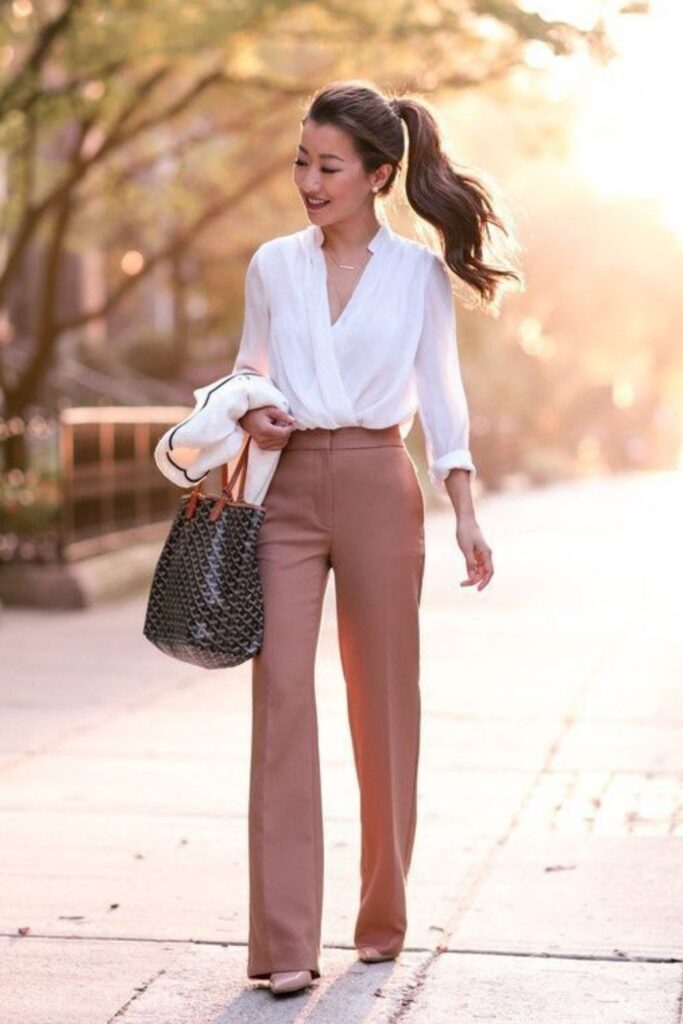

It would be best if you did not try to recreate “your 20s” and dress in cropped-down and youth-style jackets.
Instead, wear coats, elegant raincoats, sheepskin coats, fur coats, and more elegant solutions.
Teachers with experience (if you are about 50 years old or older) should avoid too dark suits and other dark and gloomy shades (burgundy and chocolate are controversial).
Remember the main thing: clothes are your decoration, and black and its “friends” will only make you old and add a few more years, making your image old-fashioned and tired.
The ideal choice is light and pastel shades, which can be perfectly combined with bright but noble matte colors.
It can be a beige blouse with gold patterns, a peach scarf or other stylish and feminine details.



Choose clothes in accordance with your figure, but do not get hung up on one style – choose several and wear them, constantly combining them.
Owners of slender legs, which even the most beautiful girls can envy, can be advised by skirts below the knee and match them with a formal or French blouse.
Continue to wear business dresses if your stature allows. As you can see, the teacher’s dress code is not the most accessible topic for discussion.
All clothes should be as appropriate for age as possible and not be too revealing and defiant.
Following all the above rules, you can create an attractive, stylish and, at the same time, business image, which will surely please everyone around you.
By the way, these are great tips on how to look stylish and still be comfortable in your airplane outfits.






